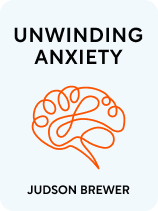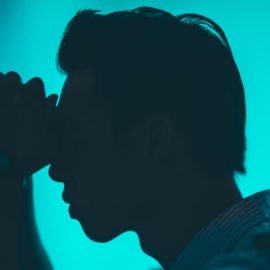

This article is an excerpt from the Shortform book guide to "Unwinding Anxiety" by Judson Brewer. Shortform has the world's best summaries and analyses of books you should be reading.
Like this article? Sign up for a free trial here.
What can anxiety lead to? How are alcoholism and substance abuse caused by anxiety?
According to Dr. Judson Brewer in Unwinding Anxiety, our brains rely on a basic behavioral cycle to learn. If this cycle is started by a negative behavior (such as anxiety), it can lead to even worse behaviors.
Keep reading to learn what types of behaviors anxiety can lead to.
Anxiety Perpetuates Itself
Anxiety tends to reinforce itself by eliciting behaviors that lead to more anxiety. Brewer explains that once we feel anxious, that anxiety becomes a trigger for new (often unhealthy) behavioral loops. What can anxiety lead to? Here are some examples:
- Trigger: Anxiety about your performance review.
- Behavior: You continue to worry about the review, but the worry doesn’t make the anxiety go away. Instead, you drink some alcohol to unwind.
- Result: You’re less aware of the anxiety.
- Lesson: You learn that drinking is a good way to handle anxiety.
These loops then mutate. For instance:
- Trigger: Anxiety about your performance review, plus anxiety about how much you’re drinking and how your drinking might be harming you.
- Behavior: More worrying, more drinking, and possibly new harmful habits.
- Result: You experience more anxiety than ever before—and possible physical harm from the drinking.
- Lesson: At this point, you’re likely to start judging yourself for how you’ve handled the situation, for how much you drink, and even for feeling anxiety in the first place. This judgment then feeds more cycles of anxiety.
In this way, Brewer says, anxiety gets entangled with a host of behavioral issues like substance abuse, depression, procrastination, and more.
To make matters even more complicated, when we get stressed, the PFC goes offline, which means that we’re no longer capable of rational thought and can only rely on instinctual survival responses like fighting (responding with anger), fleeing (by using substances or simply ignoring stressful situations), or freezing (procrastinating).
Because of the way it entangles itself with other behaviors, anxiety can easily pervade our basic state of being. Brewer describes how, for many people, anxious feelings and thoughts take hold even when we’re not consciously aware of any obvious stressor. This is called generalized anxiety disorder. Likewise, he notes that people early in the process of treating their anxiety often see some improvement only to get anxious about the fact that they aren’t feeling anxious anymore—for these people, anxiety is so omnipresent that it’s more familiar and comfortable to feel anxious than not to.
Danger and Stress Switch the Brain Into Autopilot
You’ve probably noticed that when you get stressed, it’s hard to think straight. That’s because of the way the brain is wired to deal with danger. When we perceive a threat—which could include a bear, a grumpy boss, a global pandemic, uncertainty about our future, and so on—a part of the brain called the amygdala triggers one of several automatic reactions designed to keep us safe in life-threatening circumstances:
- In fight or flight, our bodies respond actively, preparing us either to engage in physical combat or to run away.
- If the body doesn’t think that fighting or fleeing will work, it triggers a freeze, making us do nothing in hopes of avoiding harm until the danger passes.
- If all else fails—and particularly in cases of abuse and trauma—the fawn response can cause us to seek connection with a person who hurt us in hopes of avoiding future harm. This often looks like agreeing with the abuser or serving their interests in place of your own.
It’s important to realize that we don’t have conscious control over any of these reactions. In fact, in Emotional Intelligence, Goleman calls these responses amygdala hijacks because of the way the amygdala shuts down the parts of the brain responsible for conscious thought, problem-solving, and working memory. That’s why it’s so important to be able to recognize anxiety as it occurs—as we’ll see, it’s very hard to change your behaviors once anxiety has shut you down.
Treating Anxiety as a Habit
Throughout the book, Brewer talks about anxiety treatment, habits, and behavior modification more or less interchangeably—a fact that alienates some readers. That’s because he sees anxiety as a habit (an ingrained behavioral cycle), which should be addressed like any unwanted habit. It’s also because he’s interested in helping people change secondary habits like smoking or eating disorders that are often caused by anxiety in the first place.

———End of Preview———
Like what you just read? Read the rest of the world's best book summary and analysis of Judson Brewer's "Unwinding Anxiety" at Shortform.
Here's what you'll find in our full Unwinding Anxiety summary:
- How to recognize and counteract anxiety with mindfulness
- Why anxiety becomes is toxic if left untreated
- A three-step method for treating anxiety






